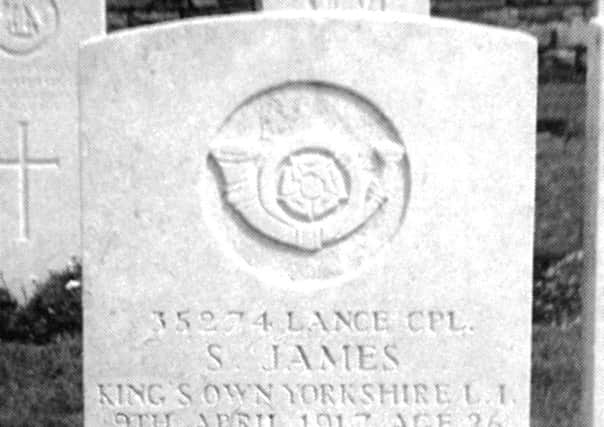Heroes humiliated as white feather frenzy took hold


THE Great War was just one day old when Rotherham suffered its first casualty of the conflict.
His name was Ernest Jubb who had lived with his parents at Clifton Grove. He was a sailor serving with HMS Amphion when the ship hit a mine off the Suffolk coast on the morning of August 5, 1914.
Advertisement
Hide AdAdvertisement
Hide AdThe ship hit a second mine and sank in the space of just 15 minutes, claiming the lives of 151 sailors. Jubb was the first person from the South Yorkshire town to be killed as a result of the war, but he wouldn’t be the last.
Members of the local community rallied round his grieving family, but despite this early tragedy the enlistment process was soon in full swing with posters around the town encouraging men to sign up.
Which they did in their droves. Many joined the King’s Own Yorkshire Light Infantry and the West Riding Infantry, but the battalion that recruited most Rotherham men was the York and Lancaster Regiment.
The sense of excitement is captured in Margaret Drinkall’s illuminating new book Rotherham in the Great War which charts the town’s fortunes over the four, long years of fighting.
Advertisement
Hide AdAdvertisement
Hide AdShe describes how recruitment sergeants would clamber onto the stage at the Empire and Hippodrome theatres in the town before each performance in front of packed audiences, and give a rousing five-minute speech urging men to come and do their bit for king and country.
At the same time as large numbers of men were signing up, groups of women started hounding young men who hadn’t joined up – handing them a white feather as a potent symbol of their perceived cowardice.
It was a movement which started in Folkestone and quickly spread across the country, becoming so intense that the government was forced to issue silver badges to men who’d already served, or were needed for the war effort at home.
The idea of using women to hand out white feathers was attributed to Admiral Charles Penrose Fitzgerald and it was reported they were being handed out just weeks after the war started.
Advertisement
Hide AdAdvertisement
Hide AdHowever, some over zealous women targeted the wrong people. There are stories of British soldiers who had been involved in the fighting at Mons, the Battle of the Marne and the First Battle of Ypres, that had been sent home to recover from illnesses or fever, only to suffer the public ignominy of being given a white feather.
Drinkall says in Rotherham these female vigilantes began sending white feathers to able-bodied men who weren’t in uniform.
One person who received a white feather was Tinsley man Sydney James. He was a professional footballer with Huddersfield Town when war broke out.
He had been an amateur player with the Tinsley Church football team, before he was snapped up by the West Yorkshire club.
Advertisement
Hide AdAdvertisement
Hide AdJames was paid £2.10s a week and in order to keep him in the team when the war started the club found him a job at Hatfield’s, a local steelmaking manufacturing firm.
At the time this was a reserved occupation but James was sent a white feather and in 1916 he enlisted in the 9th Battalion of the King’s Own Yorkshire Light Infantry.
He was made a Lance Corporal and was sent to the Western Front only to be killed on Easter Monday in 1917 - on the opening day of the Battle of Arras.
James, along with others killed in his regiment, was buried in the Cojeul British cemetery in France.
Advertisement
Hide AdAdvertisement
Hide AdToday, his name can also be found on the war memorial at Tinsley – just one of countless names snuffed out before their time.
• Rotherham in the Great War, by Margaret Drinkall, is published by Pen and Sword Books, priced £12.99.